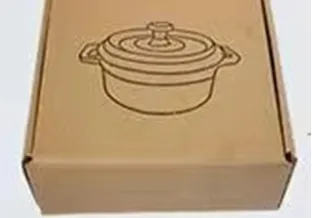
Tips for Perfectly Seasoning Your Cast Iron Skillet for Long-lasting Use
Seasoning Your Cast Iron Skillet A Comprehensive Guide
Cast iron skillets are a beloved kitchen staple, cherished for their durability and ability to retain heat. However, to enjoy the full benefits of this culinary tool, it is essential to season your cast iron skillet properly. Seasoning not only enhances the cooking surface but also protects the skillet from rust and provides a non-stick quality. In this article, we will explore the steps and benefits of seasoning your cast iron skillet.
What is Seasoning?
Seasoning is the process of applying a layer of oil or fat to the surface of cast iron cookware and heating it to create a natural non-stick layer. This process polymerizes the oils and forms a protective coating, preventing food from sticking and adding flavor to your dishes.
Why Season Your Cast Iron Skillet?
1. Prevents Rusting Cast iron is prone to rusting if not properly maintained. Seasoning creates a barrier that prevents moisture from coming into contact with the iron.
2. Non-Stick Surface A well-seasoned skillet provides a naturally non-stick surface, making cooking and cleaning much easier.
3. Enhances Flavor Over time, the seasoning can build a rich layer that adds flavor to your dishes, making your favorite recipes even more delightful.
4. Durability A well-maintained cast iron skillet can last for generations, making it a worthwhile investment.
How to Season Your Cast Iron Skillet
What You Need - Cast iron skillet - Mild dish soap (for initial cleaning) - Oil (vegetable oil, flaxseed oil, or shortening) - Paper towels or a clean cloth - Oven
Step 1 Cleaning Your Skillet
Before seasoning, ensure your skillet is clean. If it’s new or has been used, wash it with warm water and mild dish soap. Scrub away any traces of food or debris. It’s essential not to soak your skillet or put it in a dishwasher, as excessive moisture can lead to rust. After cleaning, dry it thoroughly with a clean cloth or paper towel.
seasoning your cast iron skillet

Step 2 Applying Oil
Choose your preferred oil for seasoning. Vegetable oil and flaxseed oil are popular choices due to their high smoke points. Pour a small amount of oil onto the skillet’s surface and use a paper towel or cloth to spread it evenly across the entire pan, including the handle and the bottom. Make sure to remove any excess oil, leaving just a thin layer.
Step 3 Heating the Skillet
Preheat your oven to 450°F (232°C). Place a baking sheet or aluminum foil on the oven's bottom rack to catch any drips. Once the oven is preheated, place the oiled skillet upside down on the top rack. This prevents oil from pooling in the skillet. Bake the skillet for an hour. This allows the oil to cure and bond with the iron.
Step 4 Cooling Down
After an hour, turn off the oven and let the skillet cool down inside. This gradual cooling process helps the seasoning set properly.
Step 5 Repeat if Necessary
For new skillets or heavily used ones, you may want to repeat the seasoning process 2-3 times to build a robust non-stick layer.
Maintaining Your Seasoned Skillet
With proper care, your skillet can stay in excellent condition. Here are some tips for maintenance
- Clean Gently After each use, clean your skillet with hot water and a non-abrasive scrubber. Avoid soap unless necessary. - Dry Thoroughly Always dry your skillet completely to prevent rust. - Reapply Oil After cleaning, reapply a thin layer of oil before storing to maintain the seasoning.
Conclusion
Seasoning your cast iron skillet is a vital process that enriches your cooking experience while ensuring the longevity of your cookware. By following the steps outlined above, you can maintain a skillet that not only delivers fantastic cooking performance but also serves as a cherished item in your kitchen for years to come. Embrace the art of seasoning, and you will unlock the true potential of your cast iron skillet. Happy cooking!
-
Black Cast Iron Pan- ZD Cookware|Non-Stick, Heat ResistantNewsAug.03,2025
-
Cast Iron Cookware Pancake Pan- ZD Cookware|Non-Stick, Even Heat, DurableNewsAug.02,2025
-
Cast Iron Cookware- Baixiang County Zhongda Machinery|Non-Stick, Heat RetentionNewsAug.02,2025
-
High Quality Kitchen Durable Black Round Cast Iron Cookware Pancake Crepe Pan With Wooden Handle|Non-Stick Surface&Heat RetentionNewsAug.02,2025
-
Authentic Traditional Chinese Wok for High-Performance CookingNewsAug.02,2025
-
Season Cast Iron Perfectly with GPT-4 Turbo TipsNewsAug.01,2025


